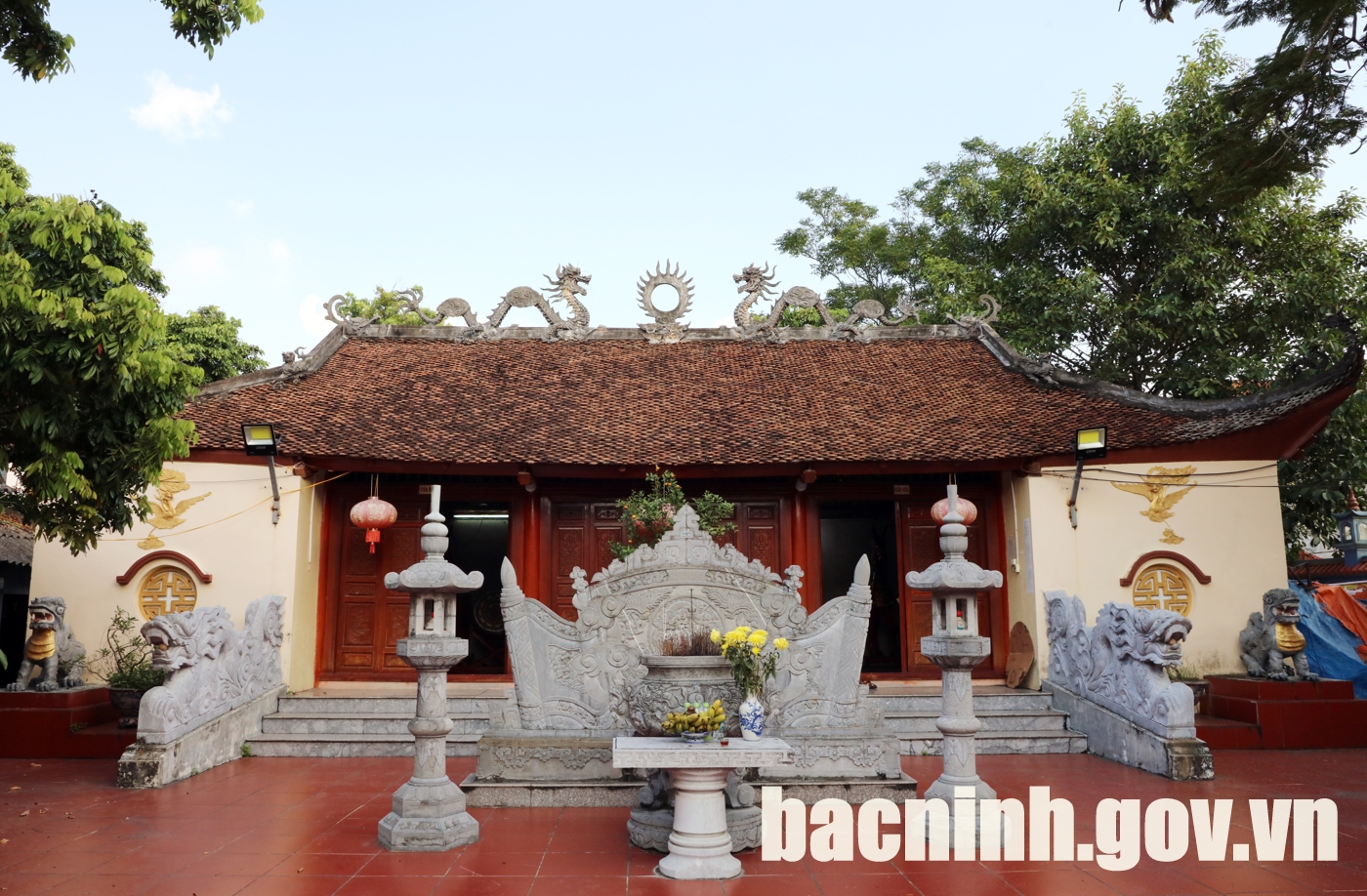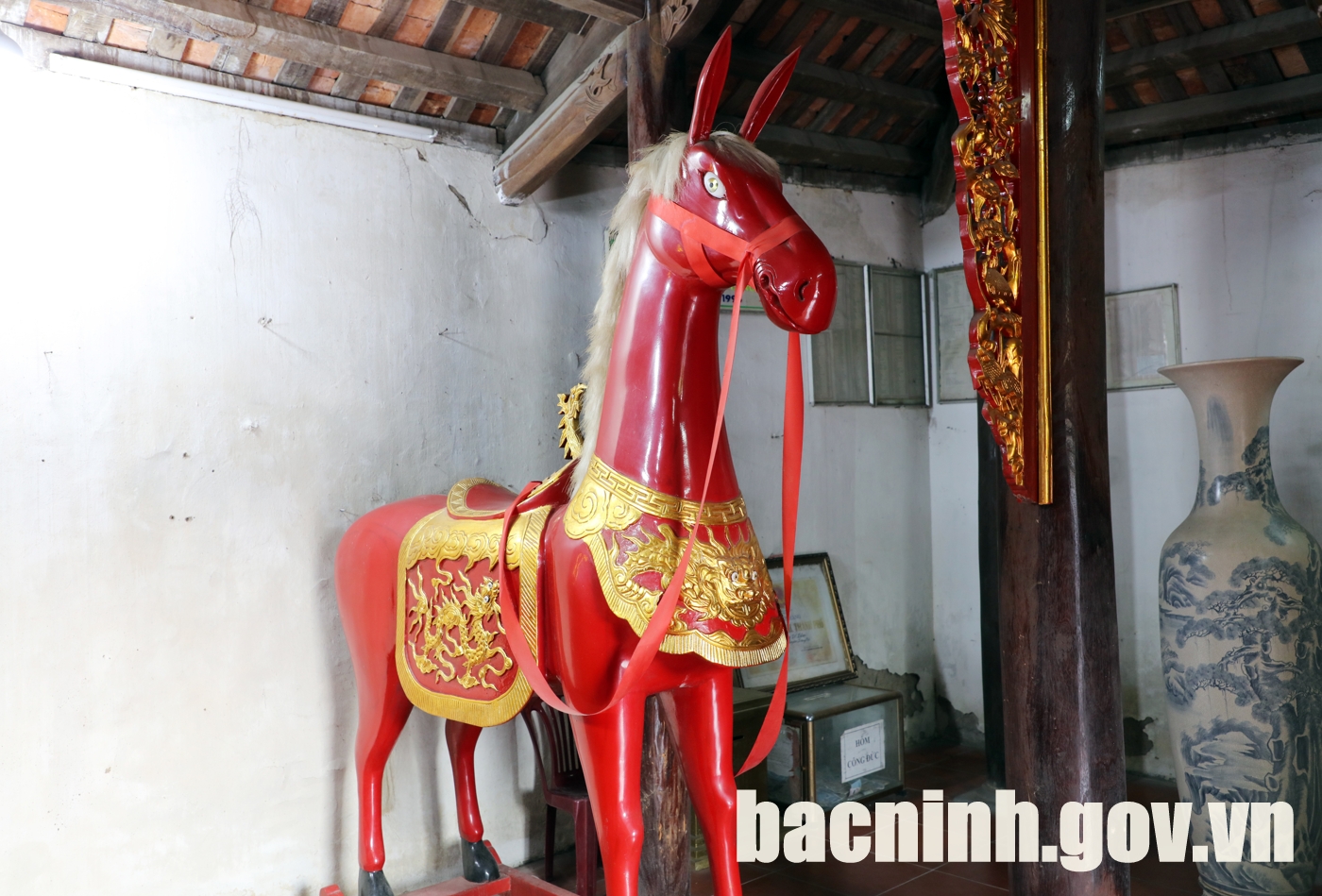Co Lam communal house
(BNP) - Co Lam communal house, Binh Dinh commune, Luong Tai district, was erected in the reign of Le Trung Hung (18th century) on a large scale with a strong ironwood frame.

Co Lam communal house.
During the resistance war against the French in 1949, the communal house was burned completely. After many restorations, until 1995, people in Co Lam village together built the communal house following the traditional architecture on the old foundation and it has remained since then.

The “Nghi môn” (Gate) is four-pillar architecture.

The rooftop is covered with two dragons flanking the sun.

4 curved roofs.
Currently, Co Lam communal house has an architecture of Chinese “Dinh” letter including 3 compartments, 2 lean-stones and 2-compartment “Hậu cung” (Emperor’s harem). The load-bearing frame is linked by 06 rows of horizontal columns and 04 rows of vertical columns.

The main altar at “Đại đình” (Great Communal Hall).


Uncle Ho's altar at the communal house.

The communal house worships the tutelary gods: Hien Linh Tuan Luong La Nam De De Vuong Vang Tri Trang and Quy Do Thien Minh Dai Vuong, who helped the Tran dynasty defeat the Mongol army.

A four-sided stele “Sáng tạo từ vũ bi ký”.

The ordinations at the communal house.
The communal house still preserves some available documents and artifacts such as 1 four-sided stele “Sáng tạo từ vũ bi ký”, dated in the year of Long Duc 2 (1733); 1 ordination during the Le dynasty; 7 ordinations during the Nguyen dynasty, etc.

A set of eight treasures.

A pink horse.
Co Lam communal house was ranked as a provincial-level historical and cultural relic in Decision No. 236/QD-UBND dated February 21, 2005.






